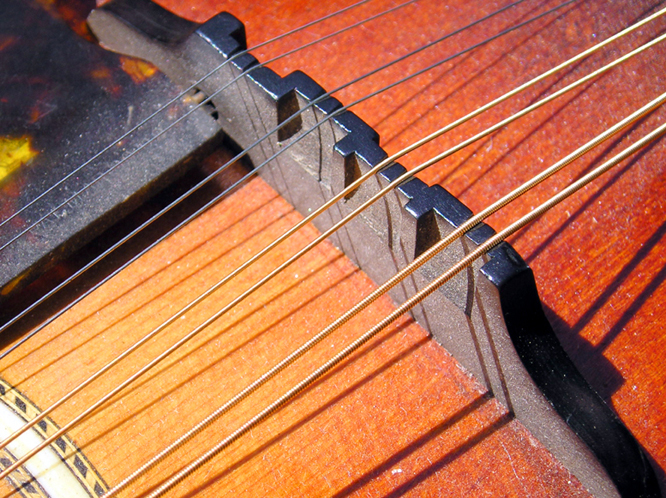I am about to do some setup work on an old Gibson A model. The action (the bridge) is too high; I would estimate I'll have to lower it at least 1/8". This is a one-piece ebony bridge; a fairly substantial piece of lumber. I've fit a few bridges to archtops over the years. Sanding off the bottom is tedious and pretty exacting--at least for me. (I just combed Frank Ford's page for help, btw).
So, I'm wondering if there is anything wrong with me sanding the TOP of the bridge down, instead of the bottom? I know I'll have to recompensate and cut new slots, but this seems much easier than the other approach.
I searched here for an answer to this question, but as usual, I didn't find the answer I was looking for.
Any advice or opinions on this job?
(Btw, in a side note, there is some top sinkage on this mandolin--at least it looks like it compared to another old Gibson I have. If the top is, indeed, sunken slightly, how come the action is too HIGH and not too LOW, as my logic, at least, says it should be?)







 Reply With Quote
Reply With Quote








Bookmarks